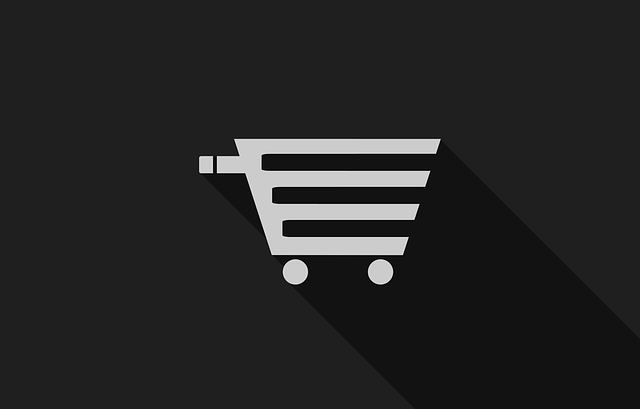In the digital age, online platforms collect vast personal data, offering convenient services but raising serious privacy concerns. While centralized storage enhances convenience and security through encryption, third-party handling presents risks of data breaches, identity theft, and transparency issues. Data privacy laws like GDPR and CCPA provide user control but can be costly for businesses. Robust security measures protect data, but complex implementations may hinder user experience. Balancing the pros and cons of online data collection is crucial to maintain a healthy digital ecosystem, ensuring both convenience and user privacy.
In today’s digital age, online services meticulously handle personal data, sparking debates about the pros and cons of centralized storage. Understanding how your information is collected and used is crucial. This article delves into the intricacies of online data collection practices, exploring both the advantages of streamlined access and the risks associated with relying on third-party services. We weigh the significance of data privacy laws and security measures while shedding light on user rights and consent in the digital landscape.
- Understanding Online Data Collection Practices
- Pros of Centralized Personal Data Storage
- Cons of Relying on Third-Party Services
- Data Privacy Laws and Their Impact
- Security Measures for Protecting Personal Information
- User Rights and Consent in the Digital Age
Understanding Online Data Collection Practices

Understanding Online Data Collection Practices
In today’s digital era, online services collect vast amounts of personal data, offering both pros and cons. This data collection is often justified as a means to enhance user experiences through personalized content, improved service quality, and efficient problem-solving. Users benefit from tailored recommendations, seamless interactions, and faster response times when platforms utilize their information effectively.
However, the cons cannot be overlooked. The vast gathering of personal details raises significant privacy concerns. Users often struggle to comprehend the extent and purpose of data collection, leading to mistrust. Additionally, there’s a heightened risk of data breaches or unauthorized access, which can have severe consequences for individuals. Balancing the convenience of online services with robust data protection measures is crucial to ensuring users’ trust and maintaining a healthy digital environment.
Pros of Centralized Personal Data Storage

Centralized personal data storage offers several advantages in the digital age. One of the key benefits is convenience; users can access their information from any location with an internet connection, streamlining tasks and enhancing productivity. This unified approach simplifies data management, as all details are stored in one place, making it easier to maintain and update.
Additionally, centralized systems allow for robust security measures. By consolidating data, service providers can implement advanced encryption and protection protocols, ensuring user privacy. This is particularly important considering the frequent data breaches reported in the news, highlighting the risks of scattered and unguarded personal information.
Cons of Relying on Third-Party Services

While third-party services offer numerous advantages in terms of convenience and accessibility, there are several drawbacks to consider when relying on them for personal data handling. One significant concern is privacy and security risks. These services often collect vast amounts of user information, making them attractive targets for cybercriminals and data breaches. Personal details, such as names, addresses, and financial records, can be compromised, leading to identity theft and fraud.
Additionally, users may not always be aware of the extent to which their data is being used or shared. Third-party services often have complex privacy policies, making it difficult for individuals to fully comprehend their rights and the handling practices of their personal information. This lack of transparency can result in unintended consequences, such as unauthorized data sharing or sales to third parties without consent. As a result, users must carefully evaluate the pros and cons of using online services to ensure their data remains secure and is used responsibly.
Data Privacy Laws and Their Impact

Data privacy laws are essential in regulating how online services handle personal data, offering both pros and cons. These regulations, such as the General Data Protection Regulation (GDPR) in Europe or California’s Consumer Privacy Act (CCPA) in the US, empower individuals to have more control over their information by granting them the right to access, rectify, and erase their data. They also enforce strict rules on consent, ensuring companies obtain explicit permission before collecting personal details. The benefits are clear: enhanced security, transparency, and accountability for how businesses utilize user data.
However, there are challenges too. Stringent privacy laws can be a burden for online services, especially smaller ones with limited resources. Compliance often requires significant investment in technology and personnel to implement the necessary safeguards and processes. Furthermore, while these laws aim to protect individuals, they can also create complexities in international data sharing and collaboration among companies, as different jurisdictions have varying standards and interpretations of privacy regulations.
Security Measures for Protecting Personal Information

Online services have revolutionized how we interact with personal data, offering numerous conveniences but also presenting potential risks. To address these concerns, robust security measures are in place to protect users’ information from unauthorized access, theft, or misuse. These measures include encryption protocols that transform data into unreadable formats, ensuring only authorized individuals with decryption keys can access it. Firewalls act as digital barriers, controlling incoming and outgoing network traffic to prevent unauthorized entries.
Additionally, two-factor authentication (2FA) adds an extra layer of security by requiring users to provide not just a password but also a unique code from their devices. Regular security updates and patches are deployed to address vulnerabilities, while data anonymization techniques help protect user identities without compromising the utility of the information. Despite these pros, there are cons to consider; for instance, complex security implementations can make navigating online services more challenging for users.
User Rights and Consent in the Digital Age

In the digital age, user rights and consent have become intricate aspects of how online services handle personal data. While the convenience and accessibility of online platforms offer numerous advantages, it’s essential to consider the potential drawbacks for users’ privacy. On one hand, services like social media networks and e-commerce sites often request access to personal information to provide tailored content or facilitate transactions. This can include everything from browsing history to location data, allowing companies to create detailed user profiles. Such practices have led to both innovative features and targeted advertising, enhancing the overall user experience.
However, the pros and cons of online platforms’ data collection methods are significant. Users may feel they have limited control over their information, especially as many services use complex terms and conditions that can be hard to understand. Moreover, data breaches and unauthorized access pose substantial risks, leading to identity theft and privacy invasions. Therefore, it’s crucial for individuals to familiarize themselves with their rights—like the right to access, rectify, or even erase their data (often referred to as the ‘right to be forgotten’)—and actively manage their online consent preferences to mitigate these concerns.






